Io – The Most Volcanic Body In The Solar System
The Fire And Ice Moon!
Looking like a giant ball of moldy cheese and almost completely devoid of craters, Io is easily the most geologically active object in the solar system and is home to over 400 volcanoes. Io’s discovery in 1610 (along with the other Galilean Moons) played a significant role in the advancement of astronomy and our understanding of the solar system.
Fast Summary Facts About The Moon lo!
- Discovered: January 8th, 1610 by Galileo Galilei
- Name: Named after the Greek mythological lover of Jupiter
- Size: Diameter of 3,643 km (2,264 miles)
- Moon Rank: 4th Largest in the Solar System
- Surface Gravity: 0.183g (18.3% of Earth’s!)
- Orbit: Prograde and slightly Eccentric (0.004)
- Orbit Radius: Between 420,000 - 423,400 km
- Orbital Period: 1 days, 18 hours, 27 minutes
- Orbital Speed: 17.33 km/sec
- Orbital Inclination: 0.05° (to Jupiter’s equator)
- Rotation: Synchronous (rotates once every revolution so the same side always faces Jupiter – known as tidally locked)
- Density: 3.53 g/cm3
- Surface: Lava flows and sulfur dioxide frost
- Surface Temperature: A Cool -160 °C (110K)
More Fun Facts About Volcanic Io!
- The discovery of Io, and the other Galilean Moons in 1610, was the first time an object was observed to be orbiting another planet and lead to the understanding that the planets orbited the Sun and not the Earth!
- There are 4 small moons that orbit closer to Jupiter than Io with its outer neighbours Ganymede and Callisto being greater in size.
- If you were standing on Io’s surface and looking at Jupiter, it would appear 39 times larger than Earth’s moon appears in the night sky. Wouldn’t that be a crazy sight!
- Io is locked in a 1:2:4 orbital resonance with Europa and Ganymede which maintains Io’s orbital eccentricity and tidal heating.
- Io’s extreme volcanism is believed to be due to tremendous tidal heating caused by the stretching and warping of Io due to Jupiter’s large gravitational pull and the perturbing of Io’s orbit by the large outer moons.
- These tidal forces cause Io’s solid surface to bulge up to 100m (330ft), many times stronger than the Earth-Moon induced tides, resulting in a liquid rock subsurface which drives the volcanoes and constant resurfacing of Io.
- The Voyager and New Horizon's probes imaged volcanic plumes that reached over 300 km (190 miles) before raining back down on Io.
- The surface features are mainly volcanic in nature, with extensive lava flows (up to 500km long) and over 100 mountains (the tallest is twice the height of Earth’s Mt Everest).
- Despite Io forming in a region plentiful in water ice, It is believed that Io has no significant water, unlike the other cold Galilean Moons. Instead, the interior is dominated by heavy elements such as iron with a surface of sulfur and silicate compounds resulting in a relatively high density and a mottled surface of orange, yellow, black, red, and white.
- Io's orbit cuts through Jupiter's powerful magnetic field, turning Io into an electric generator which discharges huge amounts of electricity along the magnetic field lines creating lightning in Jupiter's upper atmosphere! How Amazing!
- Jupiter’s magnetic field also strips off 1,000 kg (1 ton) of Io’s thin sulfur dioxide atmosphere (emitted from its volcanoes) every second forming a doughnut-shaped cloud of intense radiation known as a plasma torus. Some ions even make it to Jupiter’s upper atmosphere and create auroras!
- The Voyager I and Voyager II spacecraft were the first to image Io in detail, with additional images taken during the Cassini-Huygens and New Horizons flybys. The first probe to orbit Jupiter, Galileo, made extensive studies of the moon during its flybys along with Juno which continues to orbit the planet.
- A specific mission to study Io through a series of flybys has been proposed to NASA (yet to be selected though) called the Io Volcano Observer (IVO). There are plans to send 2 Jupiter orbiters, the NASA funded Europa Clipper mission and the European Space Agency's JUICE mission (JUpiter ICy Moons Explorer) which will both focus on the (potentially habitable) icy moons of Europa, Ganymede and Callisto.
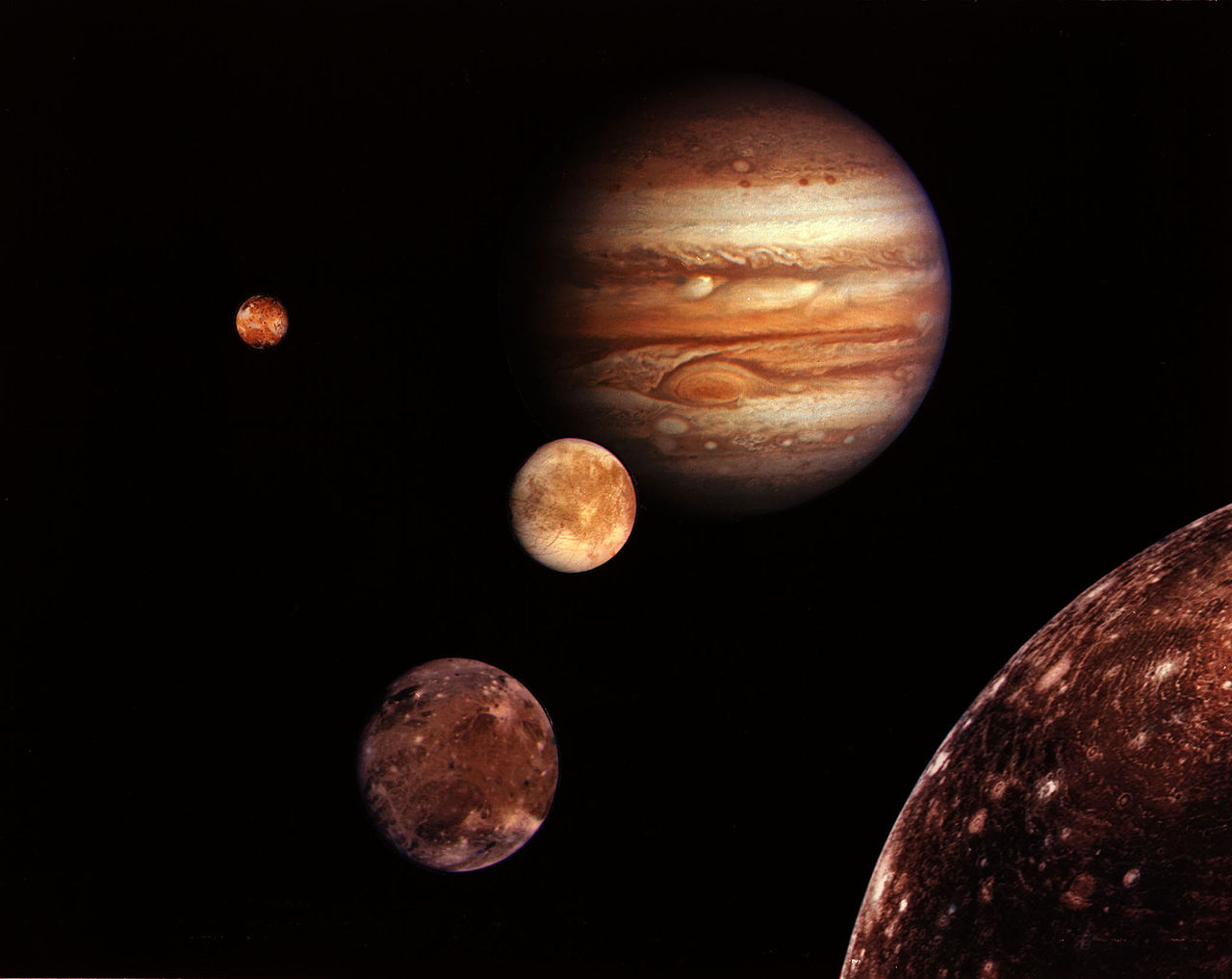

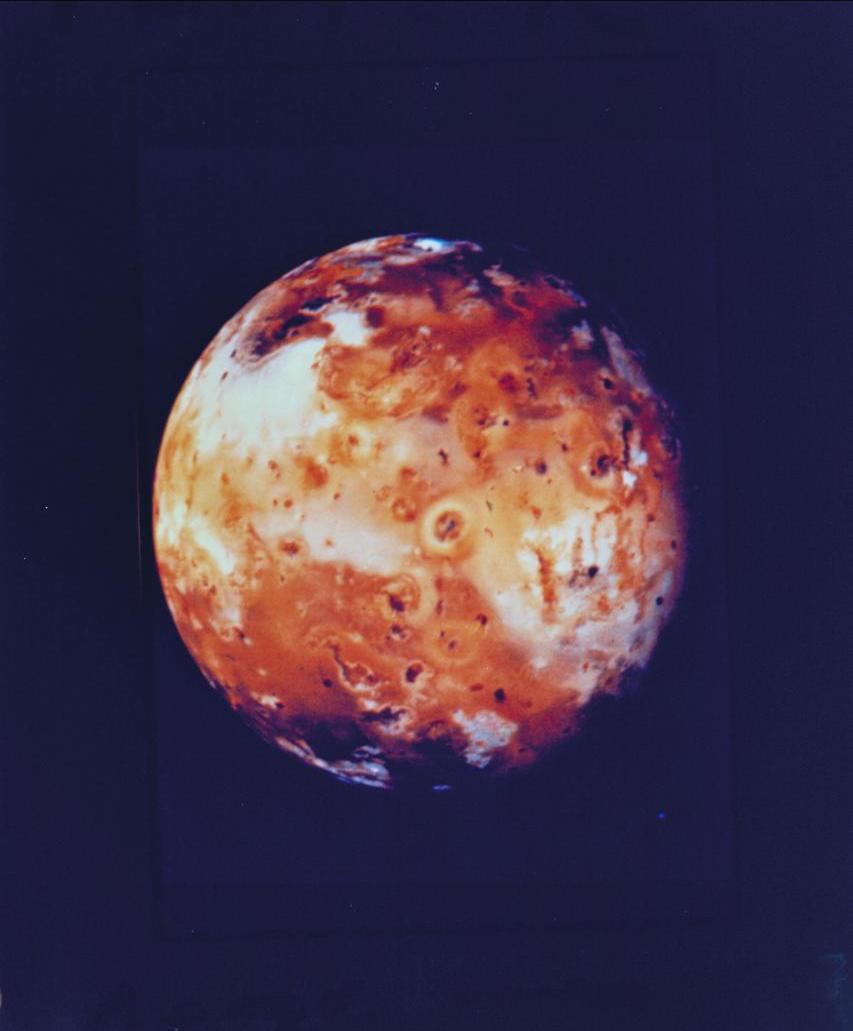





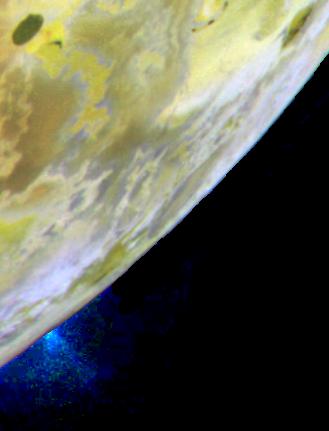
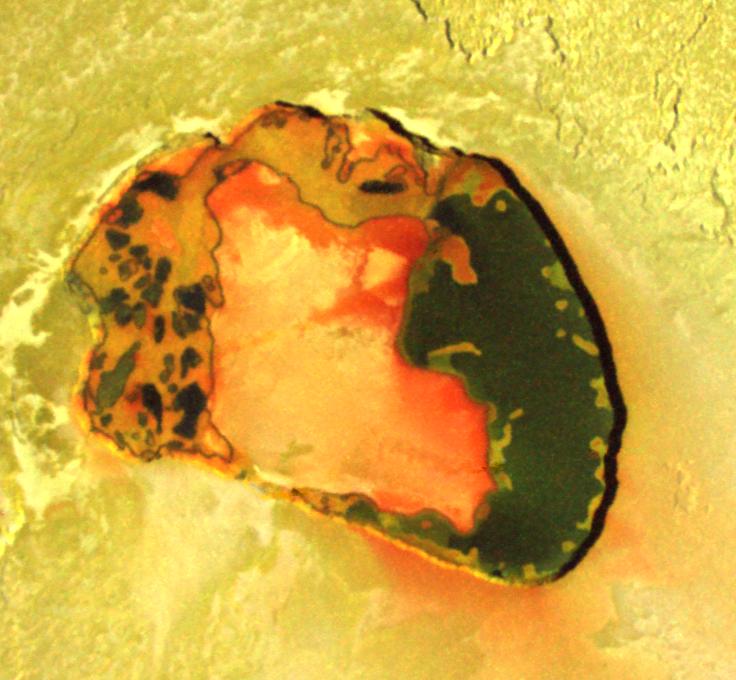
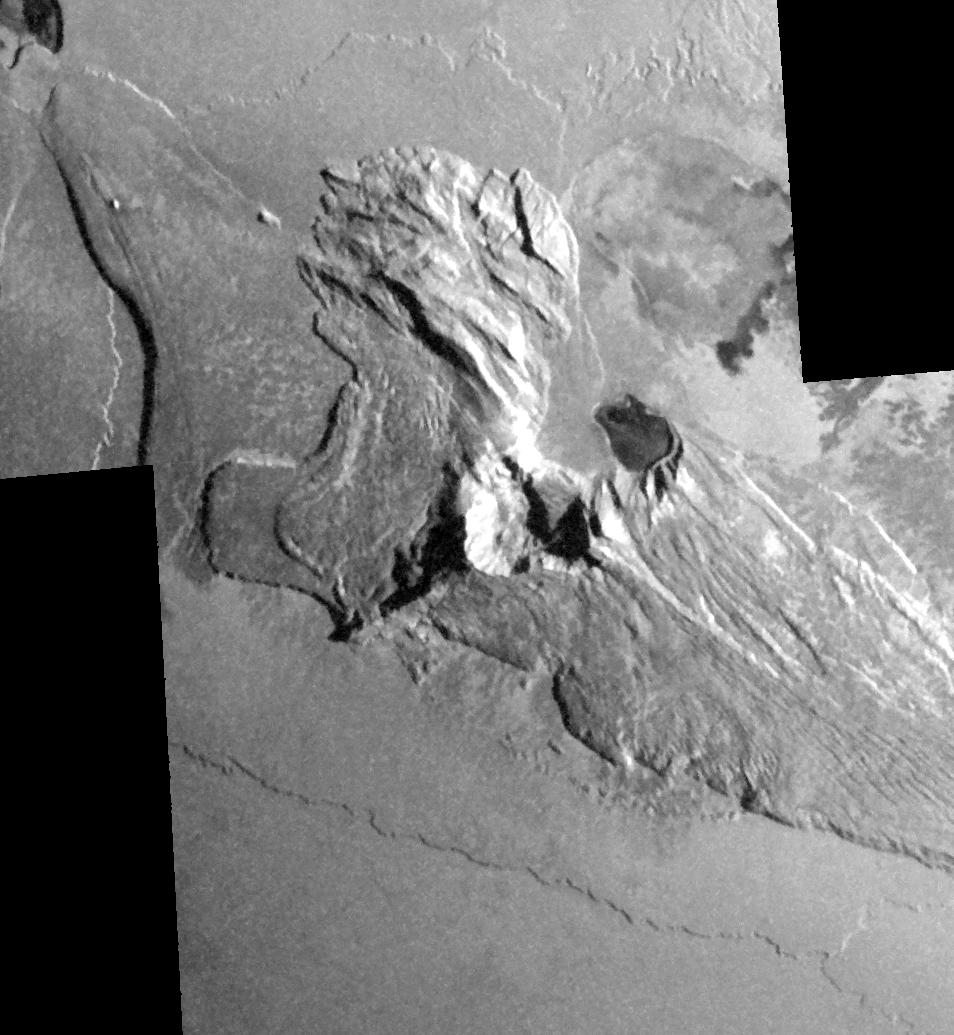
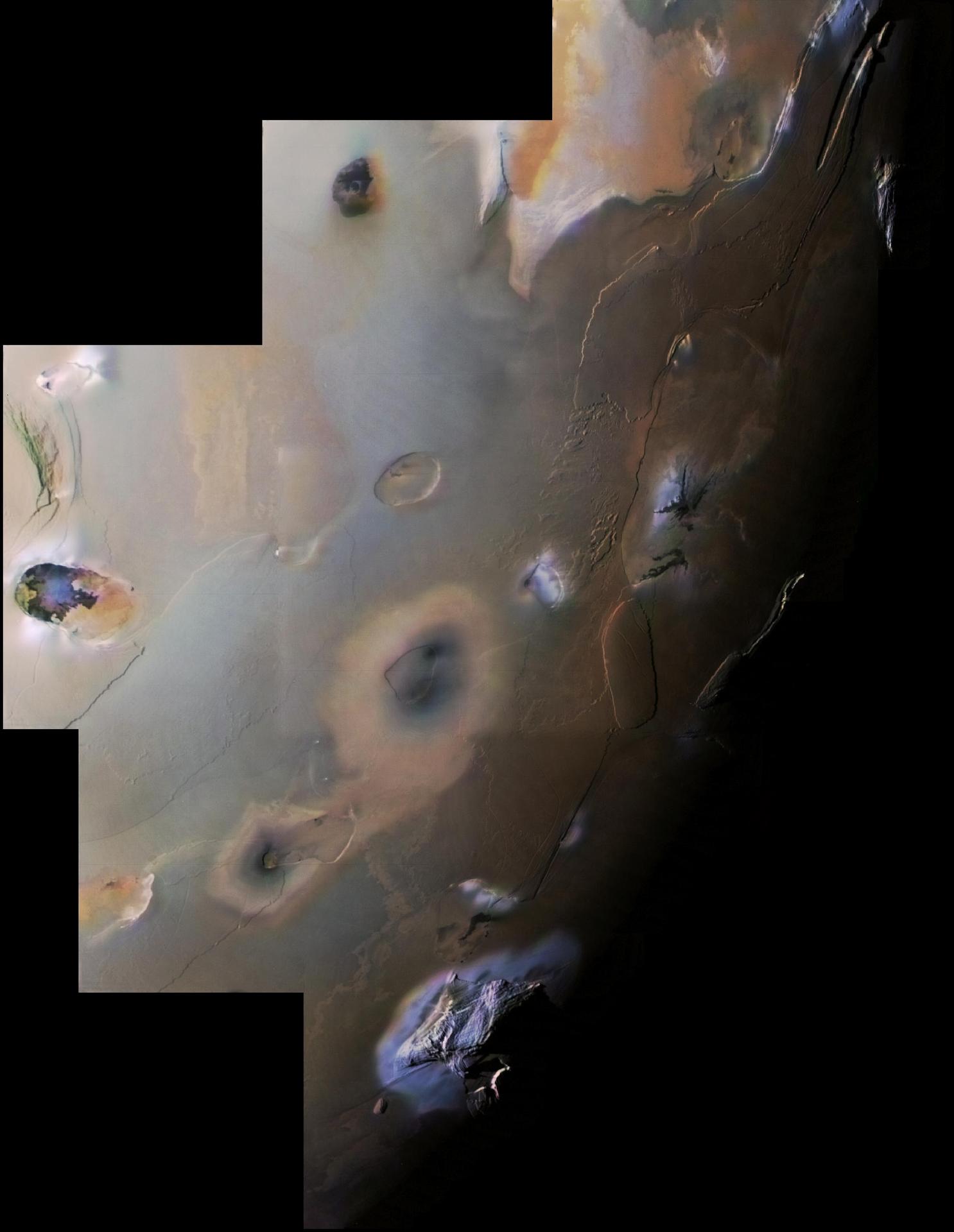


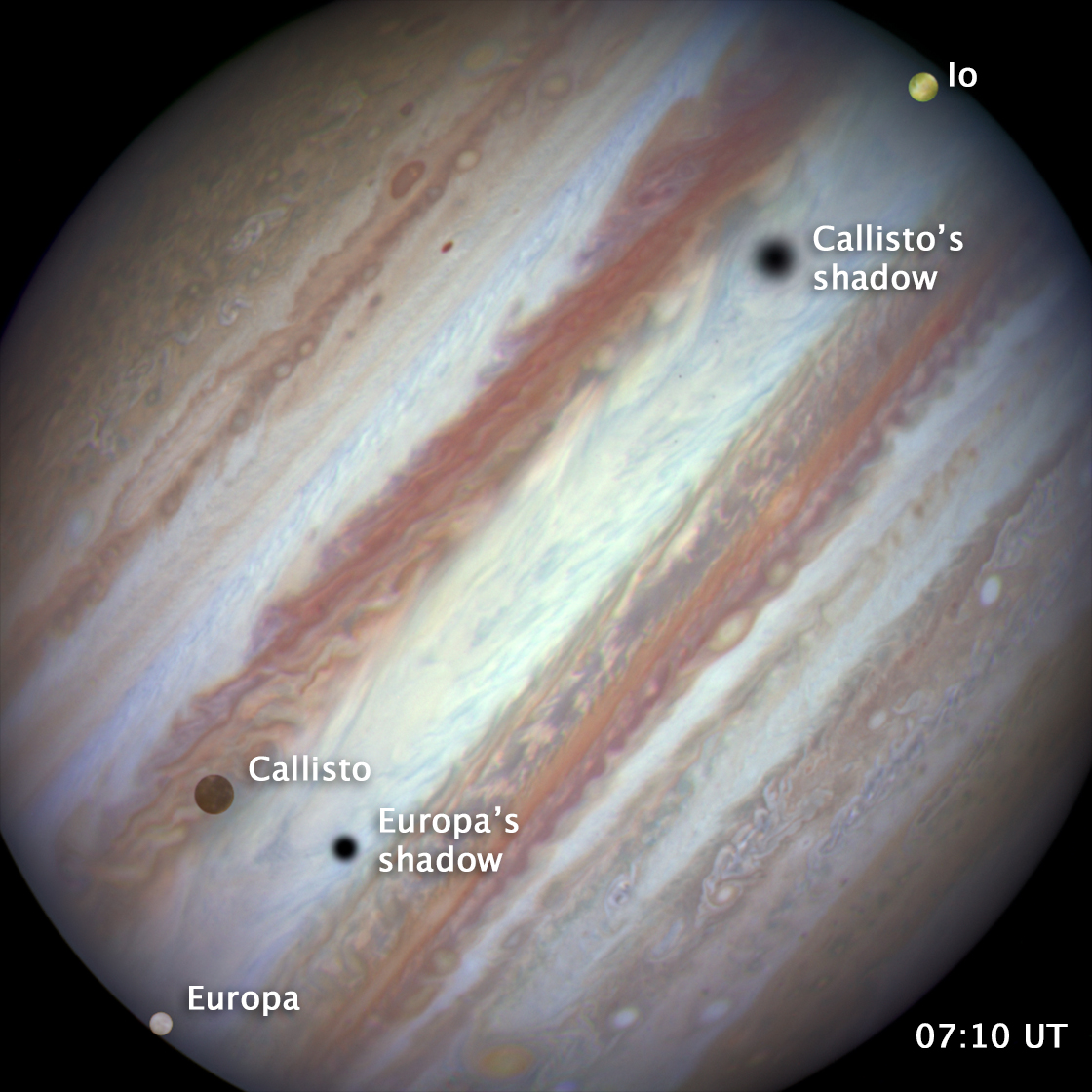


The Galilean Family
Size Comparison
Voyager 1's View
Jupiter Eye to Io
Galileo spacecraft
Spectacular Surface
Active Geology
Spectacular Geology
Side View
Tupan Patera
Tall Mountain
Volcanic Landscape
Tvashtar Eruption
Global View of Io
Moon Transits
Galilean Moons Resonance
Io





















